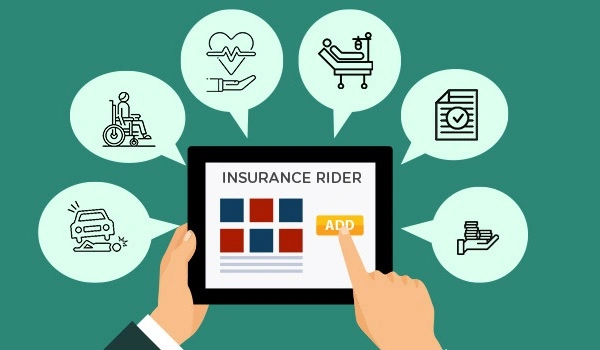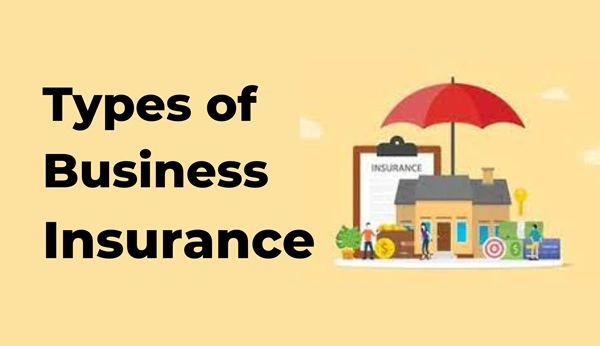When I first reviewed my own insurance policy, I noticed a section labelled “Rider” and asked myself: “Do I really need that extra cost for something I already have covered?” It turned out that riders in insurance are not just optional extras—they’re smart add-ons that help you customise your policy to cover specific risks. In India’s insurance landscape, where one size rarely fits all, understanding the types of riders available can make the difference between just having coverage and having the right coverage. In this article, we’ll explore what a rider is, why it matters, and walk through the common rider types you’ll encounter—and how to decide which ones to pick.
What is an Insurance Rider?
A rider (also sometimes called an add-on or benefit) is an additional feature that you can attach to your base insurance policy by paying an extra premium. It enhances or extends the coverage of your policy in ways that the standard policy may not cover.
For example: you buy a term life insurance policy for ₹ 1 crore. You may add a rider so that if the insured suffers a critical illness or meets with an accident, you get extra benefit. That added benefit is not part of the base policy—it is via the rider.
From my experience, many people treat the base policy as enough—but the right rider can plug gaps in protection. Let’s now examine what types of riders are available in India.
Common Types of Riders in Insurance (India)

Here are key riders you should know about, including how they work, when they make sense, and what to check.
1. Accidental Death Benefit Rider (ADB)
How it works: If the insured dies due to an accident (as defined in the policy), the nominee gets an additional sum assured over and above the base death benefit.
When it makes sense: If your job or lifestyle involves higher risk (e.g., frequent travel, heavy machinery, construction work), or you just want extra protection for accidental death.
What to check: Definition of “accident” (some exclude certain events), whether permanent disability is also covered, what is the extra sum assured, incremental premium.
2. Critical Illness Rider
How it works: If the insured is diagnosed with a specified critical illness (for example: cancer, heart attack, stroke) listed under the rider, a lump-sum benefit is paid.
When it makes sense: If you have family history of such illnesses, or you want cover for non-death risk (because disease can affect income, savings).
What to check: Which illnesses are covered, waiting period, whether policy will end after payout or continue, premium increase.
3. Waiver of Premium Rider (WOP)
How it works: If the insured becomes totally disabled (or in some cases suffers critical illness), future premiums on the base policy are waived but the cover continues.
When it makes sense: If your income is the key part of your family’s security and you want to ensure your policy doesn’t lapse in the event of your inability to pay.
What to check: Conditions for waiver (disability vs illness), whether waiver applies to all riders too, premium impact.
4. Accidental Disability Rider
How it works: Provides lump sum or regular benefit if insured becomes permanently (or totally) disabled due to accident.
When it makes sense: If you have physically demanding job, or your income depends on your physical ability, or you want to protect your family in case you cannot work.
What to check: Definition of “disability”, coverage (partial/total), benefit form (lump sum vs monthly), survival period (some require survival for a period).
5. Income Benefit Rider
How it works: Instead of or in addition to a lump sum, the nominee receives a regular stream of income (for e.g., 5-10 years) after the death or disability of the insured.
When it makes sense: If you want your family’s day-to-day expenses covered (not just one lump sum), e.g., for children’s education, regular household expenses.
What to check: Duration of income payouts, starting time, how the rider interacts with base sum assured, whether income stops on maturity or other condition.
6. Health Insurance Riders (Specialised)
While many riders are for life insurance, health policies also offer riders. Examples:
- Hospital-Cash/Room Rent Waiver Rider: Pays fixed benefit per day of hospitalisation or waives room-rent cap.
- Maternity Cover Rider: Adds cover for childbirth/newborn.
- OPD Rider: Covers outpatient treatment (consultation, diagnostics) which is normally excluded in standard health plans.
When it makes sense: Young couples, families, self-employed persons with fewer benefits elsewhere.
What to check: Waiting period, exclusions, additional premium.
7. Term Rider / Increase Cover Rider / Guaranteed Insurability
How it works: Lets you increase your coverage later without fresh medical exam or extends coverage for a certain term.
When it makes sense: If you expect your income or liabilities to grow over time (child education, home loan, etc).
What to check: When you can exercise the option, premium increase, medical requirements.
My Personal Take: How I Decided on Riders
When I was reviewing my term life cover a few years ago, I asked myself: “If I meet with an accident tomorrow, will my family be okay?” That question pushed me to add an Accidental Death Benefit rider. Then another thought: “What if I get diagnosed with a serious disease and cannot work?” That led me to consider a Critical Illness rider. Of course, each rider added to premium, but based on my risk profile (frequent travel, sedentary lifestyle, family history) I felt the extra cost was justified. I tell clients: “Riders are like tailoring your suit—same base policy, but add the pockets you need.” The key is: match rider to risk, not just pile them all in because “extra cover must be good”.
How to Choose the Right Riders: Checklist
Here’s a practical checklist I recommend when evaluating riders in India:
- Assess your risk profile
- Do you travel frequently, drive often, do high-risk work? (accident/disability)
- Any family history of critical illnesses? (critical illness rider)
- Is your income the key support for your family? (income benefit, waiver of premium)
- Do you already have health cover? (health-riders)
- Check cost vs benefit
- How much additional premium will the rider cost?
- What is the additional sum assured or benefit?
- Is it value for money considering your budget?
- Understand term & conditions
- When can you claim the rider benefit (what conditions)?
- Are there waiting periods / survival periods?
- Is the benefit paid in lump sum or instalments?
- Are the definitions clear (what counts as “accident”, “disability”, “critical illness”)?
- Check interaction with base policy
- Does rider affect base policy maturity/benefit?
- Does it add to sum assured or replace some part?
- Can you add/remove rider later? Some policies restrict this.
- Review annually
- Your life changes: marriages, children, job change, risk profile change
- Re-visit whether the rider still makes sense; you may drop or add.
Conclusion
In summary, riders are powerful tools to customise your insurance policy. Rather than being forced into a “one-size-fits-all” cover, you can attach the right types of riders to address specific risks—be it accidental death, disability, critical illness, income protection, or health-related needs. The key lies in choosing wisely: match your lifestyle and risks, check the terms, balance cost vs benefit, and review periodically.
When you next sit down with an insurance advisor, you’ll be in a stronger position to ask:
- “What riders are available with this policy?”
- “Which riders align with my risk profile and budget?”
- “What’s the extra premium and claim conditions for this rider?”




